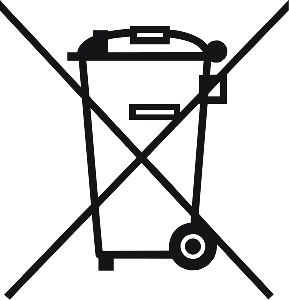Advice on recycling electrical goods
Recycling is the safest and most responsible way to dispose of electrical item that are faulty or otherwise beyond repair. Read on to discover advice about recycling everything from large kitchen appliances through to handheld gadgets.
Why recycle electrical items?
170 million new electrical items are purchased in the UK each year, but we currently recycle less than a third of these when they come to the end of their lifecycle. [1]
Electrical and electronic equipment is made up of a wide variety of materials, many of which can be reused (for example, there’s enough steel in an iron to produce 13 steel cans). [1]
By recycling your old and unwanted electrical items, you’re doing your bit to help the environment by preventing potentially hazardous waste from entering landfill and causing soil and water contamination.
What is the Waste Electrical and Electronic Equipment (WEEE) Directive?
The Waste Electrical and Electronic Equipment (WEEE) Directive, which was first introduced in 2007, governs how manufacturers and retailers in European countries behave in regards to recycling.
The regularly-updated WEEE directive is designed to ensure that less harmful electrical waste is sent to landfill; though the regulations don’t directly affect consumers, they do ultimately make it simpler for you to recycle your old electrical goods.
You can find more information about how the regulations in the Waste Electrical and Electronic Equipment Directive help you to recycle your electrical products more easily in the ‘How do I recycle my electrical item?’ section below.
What electrical items can be recycled?
Almost all electrical items with a plug or a battery can be recycled, including the following:
- Large household appliances like fridges, freezers, microwaves, dishwashers and washing machines.
- Smaller household appliances like irons, toasters, kettles and vacuum cleaners.
- IT and communication equipment like laptops, fax machines, printers, phones and smartphones.
- Audio, audio-visual and other entertainment-related equipment like mp3 players, stereos, TVs, DVD players and games consoles.
- Tools like drills, saws, lawnmowers and sewing machines.
- Personal grooming gadgets like electric toothbrushes, hairdryers, straighteners and curling tongs.
‘Can it be recycled?’ checklist
If you can answer ‘yes’ to any of the following questions, then your electrical item can be recycled:
- Does it have a plug?
- Does it use a charger?
- Does it use batteries?
- Does it carry the WEEE wheelie bin logo (a crossed out wheelie bin, see pic)?

How do I recycle my electrical item?
Recycling electrical goods is usually a straightforward process thanks to the variety of options available:
- Take your item to your local recycling centre – you can easily locate your nearest centre on the Recycle Now website.
- Under the terms of the WEEE directive, all retailers must provide a way for customers to dispose of their old household electrical and electronic equipment when they sell them a new version of the same item, either through a collection service or a store take-back scheme. Check with your retailer for details (some may apply charges for the collection service).
- Some councils offer a household recycling collection service for small electrical items; contact your local authority for more details.
More information on the WEEE Directive
Visit http://www.legislation.gov.uk/uksi/2013/3113/contents/made for more information on the Waste Electrical and Electronic Equipment Regulations 2013.
